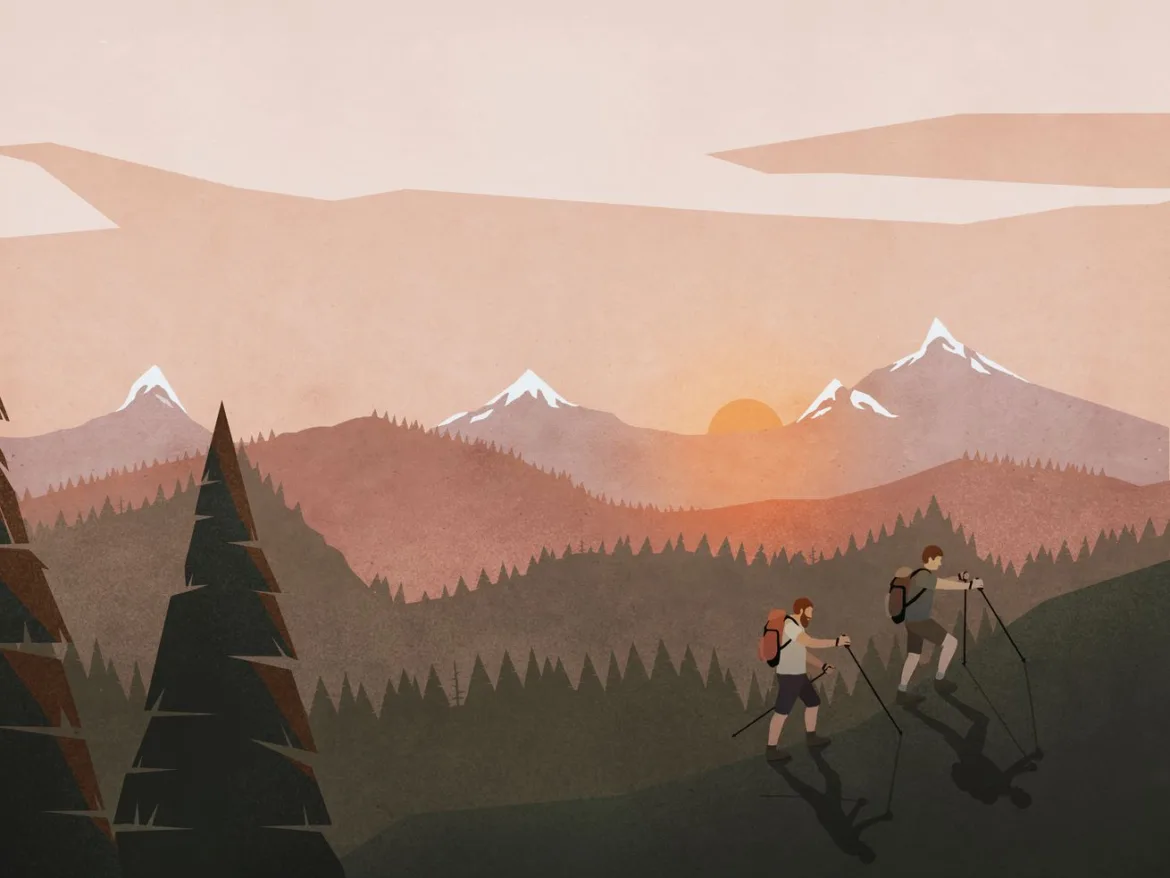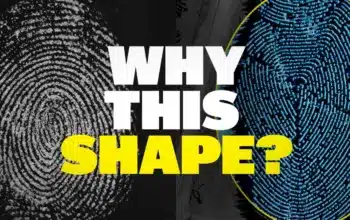Author Rhaina Cohen on what we can learn from people who choose a friend as a life partner.
We live in a culture that privileges romance. Specifically, marriage.
It’s not just that the fairy tales we grow up with end in some couple’s “happily ever after.” The reign of romance is in our laws, too. In America, married people get over 1,000 legal benefits that single people can’t access.
That’s … weird! Why should society assume that romantic love is the ultimate form of commitment? For some people, the most meaningful and long-lasting relationship they’ll have is actually a deep friendship.
What if society were structured so that people who choose a friend as a life partner — people in a platonic partnership — could raise kids together, share health insurance with each other, and make medical decisions for one another, rather than being dismissed as “just friends”?
To explore these questions, I invited Rhaina Cohen onto The Gray Area. She’s the author of the new national bestseller, The Other Significant Others: Reimagining Life With Friendship at the Center. This deeply reported book follows several pairs of platonic partners, who unsettle societal assumptions about which relationships are supposed to scaffold our lives. It argues that we’re undermining romantic relationships by expecting too much of them while diminishing friendships by expecting too little of them.
Rhaina is also a personal friend of mine, so we had the opportunity to get a bit meta in our podcast discussion about friendship. Below is an excerpt of our conversation, edited for length and clarity.
Sigal Samuel
A major project of your book is to take these ideas that we’re all familiar with — friendship, romance, marriage — and historicize them. By that I mean you try to show readers that these ideas have actually changed a lot over the centuries. It’s not like they just fell from the heavens in their current form. So tell me some of the surprising things that the historical record has revealed to you about friendship.
Rhaina Cohen
We could start in the present, where we think about friendship now as a relationship that is kind of an add-on, not necessarily the crux of a good life, and as a relationship that is private rather than one that is publicly recognized or celebrated. And it’s a relationship that’s lower on the hierarchy than family, than romantic relationships, even career.
But if you look back in time, the picture is actually really different. You can go back to the story of David and Jonathan in the Hebrew Bible. You can go back to ancient Roman thinkers and how they talked about their friends as “the other half of my soul,” or “the better half of my soul.” The kind of language that would seem more like what you would say for your romantic partner who is supposed to be at the top of your hierarchy.
And there were practices in the past, like a ritual called sworn brotherhood, where men would walk into a church, put their hands one on top of the other on the Gospels, and have a priest say a blessing over them that made them committed to each other for life. Sometimes these men were buried with each other rather than with their wives. So it’s making friendship public and equal to, if not greater than, marriage. It’s turning friendship into an enduring kinship relationship. And there is this emotional experience and adoration and effusion that we don’t necessarily think of as appropriate in friendship right now.
This kind of sworn brotherhood relationship was something that you could see throughout medieval England and in the Byzantine Empire. You could also find versions of this practice among monks in other parts of the world, like China.
Sigal Samuel
Fast-forward to modern-day America and we see an extremely sharp contrast. So how did we get to this thinner, more impoverished view of friendship that we have today?
Rhaina Cohen
There are basically two trends that braid together. One has to do with the way marriage has been understood over time, and the other has to do with what’s possible within friendship.
Marriage used to be much more of a pragmatic institution. People would enter into it to merge their families and their wealth, not so much for love, let alone finding a soulmate. And there was, of course, tons of inequality — women until kind of recently were property of their husbands — so it really is not much of a surprise that people tended to find much more emotional intimacy in their same sex-friendships, which were more egalitarian than in their marriages.
But starting 150 years ago or so, it’s much more common for love to be seen as an essential part of marriage. And then in the last half century, you have even higher expectations of marriage, where people want their spouse to be their best friend, which doesn’t leave as much room for friendship.
And then alongside this, by the turn of the 20th century or so, emotional and physical intimacy between same-sex friends became suspect, as you have the introduction of the category of homosexuality and any kind of same-sex sexual interaction being seen as really stigmatized.
So you don’t get to have this kind of closeness, where women were exchanging locks of hair with their friends, where same-sex friends would share beds together because that was a norm at the time. There was really this crowding out of the emotional and physical intimacy of friendship. There was just a lot of fear around being labeled as homosexual.
Sigal Samuel
In the book, when you talk about friendship versus romance and love versus lust, you get into the neurobiology a bit. Tell me what the science reveals about the difference between friendship and romance or love and lust.
Rhaina Cohen
I think most people today, in a place like the US, assume that these two things go together, that love is impossible to have without lust. So many of the friends that I write about in this book, who clearly love each other, are kind of incomprehensible to the world around them, because everybody wants to imagine that they must have some kind of sexual desire for one another.
But in fact, there’s research that shows that the drive for love or attachment is different from the sex drive. And while they might go together, they don’t always. Different chemicals and networks in the brain are involved in the attachment versus the sex drive. So, hormones like androgens and estrogens are involved in sex, whereas when you’re forming a close attachment or love relationship, we’re getting a hit of oxytocin and dopamine. This helps explain how it is possible to feel passion and infatuation, which you might connect to an attachment relationship or a love relationship, without having that sexual drive.
The researcher who’s done a lot of this work is Lisa Diamond, who’s at the University of Utah. And it helped her understand a bunch of women she had interviewed and traced over the course of decades, who had a friendship that she talks about as a kind of in-between world, where they did not seem to be denying any kind of sexual desire that they had for another person — they just didn’t feel it. And yet they had more intensity than we think of as being reasonable in “just” friendship.
Sigal Samuel
When I think about the implications of the neurobiology for how we’re living, I get the image in my mind of Lego blocks. I’m wondering if we should think of different relationships as structures made of these Lego blocks that we can assemble, disassemble, reassemble into different configurations over time as our needs shift.
At one point, someone might be your housemate and your sexual partner and your co-parent and your closest supporter in times of crisis. And at another point in life, maybe that’s not the right fit, and they might be just one or two of those things. Maybe that makes sense if a different neurochemical thing is happening at a different point. Maybe we should have more okayness about that shift.
Rhaina Cohen
I think a familiar version of this for a lot of people is imagining a very stereotypical romantic relationship over the course of decades that starts off with sex being really an important part of it, and then people have kids and they don’t have time or energy to have much of a sexual relationship. And that may or may not be an issue for the couple — they might feel mutually okay about that.
We have a stereotype in our society that older people are not that sexual, which I don’t subscribe to, but there is some understanding that a marriage can still be really meaningful even if it becomes more companionate over time, and it’s built more on emotional intimacy and the sex piece is less important.
So there’s already recognition that you can have that kind of modularity in marriages. And I think this can apply to other kinds of relationships, too.
Sigal Samuel
There is this great term in your book, “compulsory coupledom,” to describe this fixation in our society on romantic relationships and particularly on marriage. And that’s not just a cultural thing. The government seems to really promote and push marriage. How did that come to be, historically? Why does the state want to be so up in my business — and should it get out?
Rhaina Cohen
A lot of the rights and benefits that are attached to marriage really develop around the New Deal, when there are these new government programs. A good proxy to make sure that everyone is covered in a society where almost everybody is married is to use marriage as a criterion for something like dependency. So it’s a way to cover women for retirement benefits, to make sure they’re not in poverty when they themselves are not working.
Basically, marriage is a shortcut to tell you something about caregiving and dependency, and for the state to encourage people to have those sorts of relationships. We need people to be caring for each other.
Sigal Samuel
That’s also because it serves the state, right? That means fewer people on government rolls.
Rhaina Cohen
Fewer people on government rolls, yes. But also there is value to people raising children, and there is a value to people caring for somebody who is sick. It doesn’t mean that you can’t have other people do it, but it’s a way of recognizing that it is important societally for that to happen, that that’s not just free.
Sigal Samuel
To this day in the US, marriage comes with this huge package of rights and benefits, while friendships, no matter how deep or committed they are, get basically nothing. To me, that seems pretty silly because functionally these deep friendships are often doing a lot of the same stuff — the stuff that the state wants to see happen, like caregiving.
What would be the most effective way to grant unmarried people the same rights as married couples have? Do we need a legal alternative to marriage?
Rhaina Cohen
I want to pinpoint a word you used, which was “function.” So much of the law is built around the form or the structure of relationships and not paying as much attention to the function. But there’s been, certainly in family law, a shift to look more at the function. One of the arguments that I saw from several legal scholars is that it is caregiving and economic interdependence that the state has a vested interest in supporting.
So, you can do an inventory where you’re only keeping the rights and benefits that pertain to caregiving and economic interdependence — for example, worker’s compensation for a surviving spouse, which is compensating for lost income in a relationship where people are economically interdependent — and use those as criteria [for deciding who gets certain benefits] rather than marriage. Because marriage is not, especially in this day and age, as good of a proxy as it used to be. So you can basically strip marriage down and extend benefits on a different basis.
I think simpler options are just having people designate a person who is the default stop for making major decisions in their lives. That could be something as simple as a form that you fill out when you’re at the DMV or at the post office.
And then the final option would be the legal alternative to marriage that doesn’t have the romantic connotation attached to it. Colorado has this law called a “designated beneficiary agreement.” It’s different from marriage, where you have this giant bundle of more than 1,000 rights and benefits. It’s a little bit more à la carte: There are two sheets of paper, very simple, 16 different rights and benefits, and you can check off which ones you want to give and receive from the other person. That kind of template could be used in other places that would allow people in nonmarital relationships to ensure that the person who is making medical decisions on their behalf is the one that they want, and the person who is handling end-of-life care is the person that they want, and so on.
It is okay for one person to not be the right person for everything. I’m very aware of my weaknesses, and it would be a relief to me to know that there might be another person for my husband to turn to for certain kinds of things that I’m not the best at.
Sigal Samuel
When you look ahead to 20 years from now, what route do you think policy could take that would actually work to accommodate the committed friendships that we do see on the ground?
Rhaina Cohen
There are already legal alternatives to marriage that are happening in the US, and there are groups that are really pushing for this. In Somerville and Cambridge, Massachusetts, there are already domestic partnerships that you can sign up for that actually allow more than two people to sign up. They were explicitly made so that they didn’t have a romantic connotation, so friends could take advantage of them. The first legislation that would prevent discrimination on the basis of family structure was also passed in that part of the country. And on Valentine’s Day this year, basically the same kind of legislation was introduced in Oakland and in Berkeley.
So I already see people moving in this direction of trying to put other options on the table. And what I think is promising about the Colorado law is that it’s very cheap, and it’s easy to get, and it also has at least some amount of customizability. I think something that has that mix could be helpful in the future. But let’s talk again in 20 years, and we’ll see.



